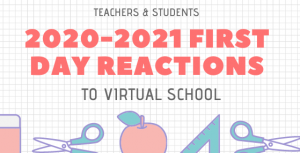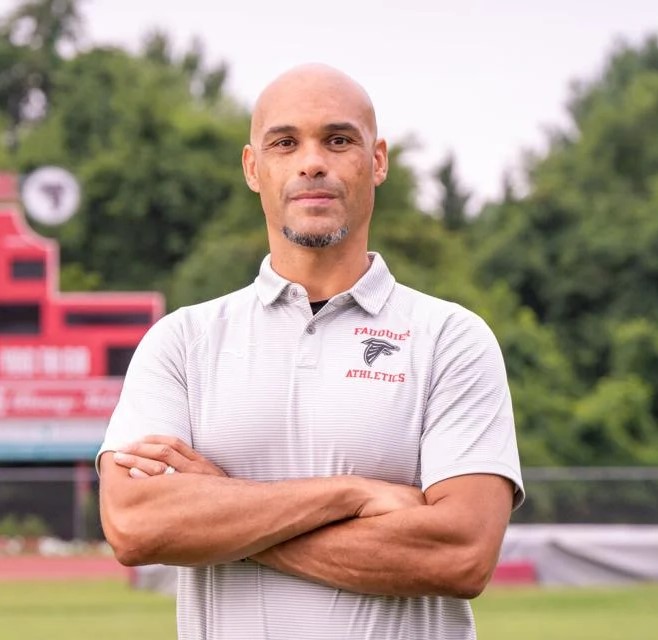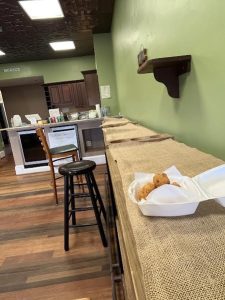First Day of School: Teacher Reactions
August 26, 2020
When teachers prepared for their student’s first day back to school in the past, the to-do list probably consisted of completing required professional development, creating lessons, collaborating with peers and setting up classrooms. However, this year, a whole new item was added to the list: dealing with a national pandemic.
Aug. 24 marked the first day of virtual instruction for teachers and students for the 2020-21 school year. Previously, teachers began their day with a flock of students filling their classrooms, this day they worked from an empty classroom, teaching to a screen full of students.
Many teachers stated that seeing their students across a screen was not the same as seeing them in person. Math teacher Cheri Pascoe said, “I like to talk to and greet each student as they walk in the classroom, and it is harder to do this online. I can tell how a student’s day is going by how they are walking down the hallway to get to class and how they respond to my hello, and I am not used to doing this online.”
English teacher Julia Follendore added, “Usually by the end of the day, I know the names of my students and have identified their names with the faces. Virtual meetings have made that process more difficult.”
Despite these difficulties, teachers still found joy in “seeing” their students’ faces again. “It was hard not being face-to-face, but I am glad I was able to at least see them,” said physical education (PE) teacher Catherine Anderson. English teacher Jennifer Major agreed, saying that she “can’t wait to get to know each of them.”
Most teachers spent the day welcoming students back and going over plans for the class. They included ice breaker activities to better gauge who each student is as a person and also went over assignments, meeting times and online rules and expectations.
Major, for example, stated her plan to use break out rooms where she can “talk with the students in small groups” and “hear their ideas and thoughts.” In addition, history teacher Charles Kieth described how he will use his synchronous days to teach main ideas and critical thinking questions through videos he calls “Mr. Keith LIVE!”
Although virtual learning holds exciting opportunities for the classroom, teachers worry about the challenges that pair with these conveniences. “Since I will not be able to see how the students are working through the [math] problems, I will not be able to quickly identify which students are getting frustrated with the material like I would if they were in my classroom,” said Pascoe. “The students will have to make sure they ask questions and let me know if I am going too fast or if they are not understanding what we are doing.”
Another subject of concern is teaching PE. “The students have to take ownership in staying active at home” and be “honest in completing their activity log,” said PE teacher Robert Glascock.
Additionally, Anderson, who teaches ninth grade PE, said that she wanted her student to feel confident in class since they are new to high school. “Everyone is nervous starting a new school year and moving schools can be hard,” said Anderson. “ It is definitely not going to be easy doing PE online but we will make it work and have fun teaching.”
Although challenges may be ahead, teachers are ready to persevere. “We will make it work and the students will learn what they need to learn,” said Pascoe. “I will continue to adjust what we do and how we do it so make it work for all of my students just like I would do if they were here.” Keith added that the situation is “not ideal, but doable,” saying that most importantly, “We must stay positive.”







